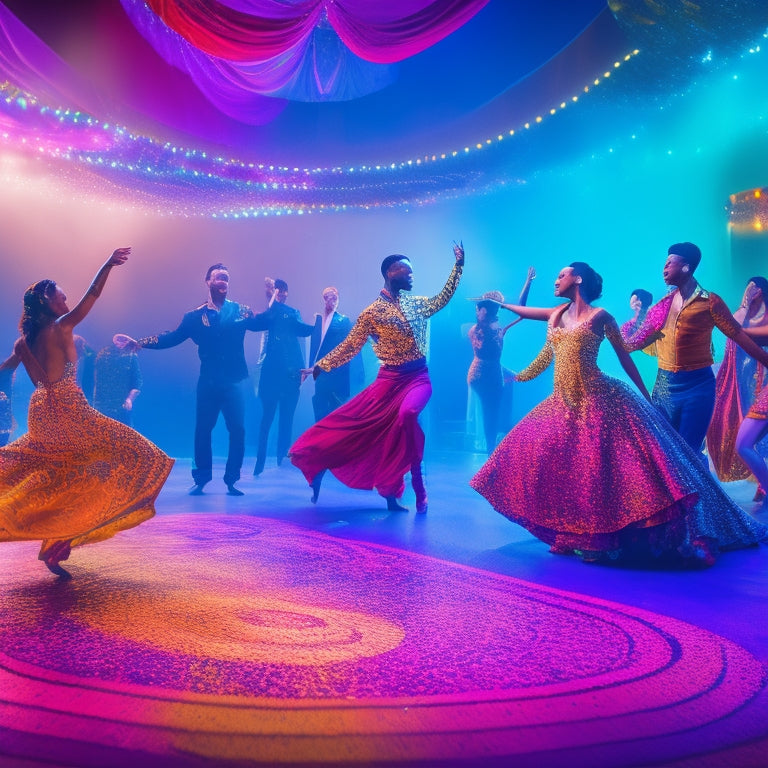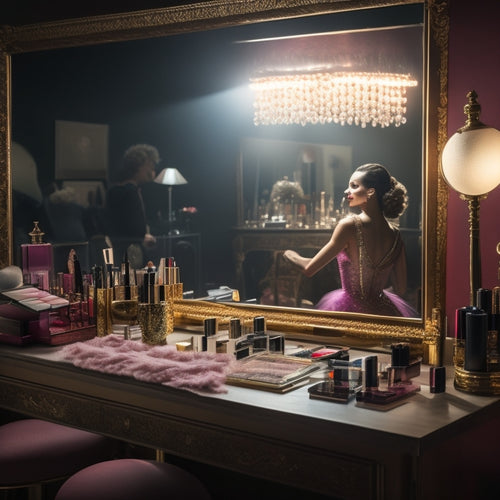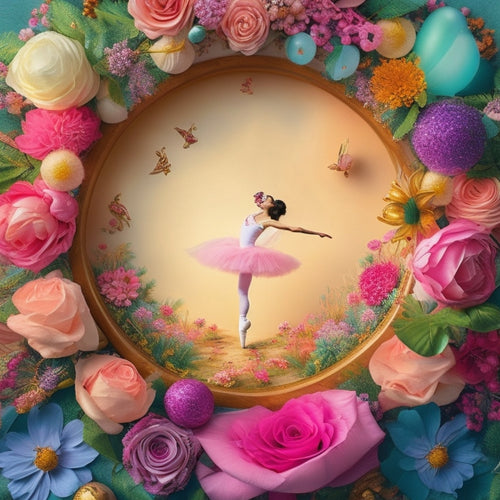
Dance Icons and Cultural Fusion Unveiled
Share
Dance icons like Josephine Baker, Isadora Duncan, and Gene Kelly have shaped the world of dance with their unique styles, paving the way for cultural fusion. Eras of fusion, such as the Retro Revival and Jazz Age, have blended diverse influences to create a dynamic dance landscape. Dance transcends borders, conveying values, beliefs, and identities of communities, and empowering individuals to reclaim cultural identities. As we explore the intersection of dance icons and cultural fusion, a rich tapestry of artistic expression and cultural heritage unfolds, revealing the intricate threads that weave together to form our collective cultural narrative.
Key Takeaways
• Legendary dance pioneers like Josephine Baker, Isadora Duncan, and Gene Kelly have shaped the world of dance with their unique styles and influences.
• Cultural fusion in dance has led to the creation of diverse eras, including Retro Revival, Jazz Age, and Belle Epoque, each with its distinct character.
• Dance icons have played a significant role in promoting cultural fusion by blending different styles and influences in their work.
• The fusion of different cultural influences has contributed to the evolution of dance, making it a dynamic and diverse art form.
• Dance has become a universal language, transcending borders and conveying values, beliefs, and identities of diverse communities.
Legendary Dance Pioneers Uncovered
Exploring the trailblazing careers of dance icons, such as Josephine Baker, Isadora Duncan, and Gene Kelly, provides a fascinating glimpse into the evolution of dance as an art form. These pioneering movements, often forgotten legacies, have left an indelible mark on the world of dance. Baker's African-American roots and Parisian flair, Duncan's free-spirited approach to movement, and Kelly's athletic elegance have all contributed to the rich tapestry of dance history.
Global influences, from the rhythmic cadences of African drumming to the melodic lilts of European folk, have infused dance with timeless rhythms. As we investigate the lives and works of these dance icons, we uncover the intricate web of cultural exchange and artistic innovation that has shaped the world of dance.
Eras of Cultural Fusion Dance
As the rhythms of different cultures converged, dance styles evolved through the fusion of diverse influences, giving rise to distinctive eras that continue to shape the dynamic landscape of dance. These eras, characterized by their unique blend of cross-cultural influences, have contributed to the rich tapestry of dance.
| Era | Characteristics |
|---|---|
| Retro Revival | Fusion of vintage styles, nostalgic flair, and modern twists |
| Jazz Age | Blend of African American, European, and Latin American influences |
| Belle Epoque | Opulent, extravagant, and sensual, reflecting the era's cultural sophistication |
The fusion dance evolution has led to iconic dance eras, such as the Lindy Hop and Jitterbugging, which have experienced a retro dance resurgence in recent years. This cultural fusion has resulted in a diverse and dynamic dance landscape, reflecting the ever-changing nature of human expression.
Dance as Cultural Expression
Beyond the fusion of styles and eras, dance emerges as a profound cultural expression, conveying the values, beliefs, and identities of diverse communities. As a universal language, dance transcends borders, embracing global influence while honoring traditional roots.
The evolution of dance is deeply intertwined with cultural significance, reflecting the social, political, and economic contexts in which it is performed. Through movement and gesture, dancers convey emotions, tell stories, and preserve cultural heritage.
As a powerful tool for self-expression, dance empowers individuals to reclaim their cultural identities, fostering a sense of community and belonging. By embracing its cultural significance, dance becomes a potent symbol of freedom, creativity, and human connection.
Frequently Asked Questions
What Inspired Josephine Baker's Iconic Dance Moves in the Belle Epoque Era?
Josephine Baker's iconic dance moves in the Belle Epoque era were inspired by her experiences in French Cabarets, where she absorbed Exotic Primitivism, a fusion of African and European styles, which she later reinterpreted with her unique fusion of jazz and African rhythms.
How Did Norma Miller Influence the Lindy Hop Dance Style in the 1930s?
Norma Miller's energetic and improvisational style greatly impacted the Lindy Hop dance in the 1930s, particularly at the Savoy Ballroom, where she was a prominent figure, contributing to the Swing Revival era's dynamic and carefree spirit.
Can Music Covers of Jazz Classics Revive the Burlesque Dance Era?
Music covers of jazz classics can potentially revive the burlesque dance era by infusing vintage fusion, blending nostalgic charm with modern flair, and reigniting the sensual, playful spirit of a bygone era, thereby sparking a Burlesque Revival.
What Role Did Gene Kelly Play in Popularizing Jazz Dance in Old Hollywood?
Gene Kelly's meteoric rise in Old Hollywood was akin to a perfectly choreographed storm, as he electrified audiences with his innovative dance style, fusing athleticism and elegance, and cementing jazz dance as a staple of Hollywood glamour, revolutionizing the era with his groundbreaking dance innovations.
How Did the Juke Joint in Memphis Shape the Evolution of Jitterbugging?
In Memphis Nights, the Juke Joint's rustic, improvisational atmosphere fostered the evolution of Jitterbugging, as Southern Roots infused the dance with a unique blend of energetic rhythms and carefree spirit, birthing a distinctive, liberated style.
Related Posts
-

5 Essential Tips for Dance Makeup Artists Online
As a dance makeup artist, you know having a strong online presence is key to success. You need a professional website...
-

Ballet Cut File Set: Versatile Designs Available
The Ballet Cut File Set offers a wide-ranging collection of versatile designs available in multiple formats, includin...
-

Get Crafty! Dance SVG Digital File
Elevate your DIY projects with the Get Crafty! Dance SVG Digital File, featuring 10 unique designs tailored for dance...


